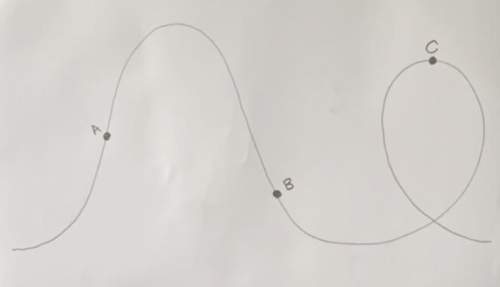
Physics, 05.09.2020 01:01 tanionxavier
In this example we will analyze the motion of an electron that is released in an electric field. The terminals of a 100 V battery are connected to two large, parallel, horizontal plates 1.0 cm apart. The resulting charges on the plates produce an electric field E⃗ in the region between the plates that is very nearly uniform and has magnitude E=3.0×104N/C. Suppose the lower plate has positive charge, so that the electric field is vertically upward, as shown in (Figure 1) . (The thin pink arrows represent the electric field.) If an electron is released from rest at the upper plate, what is its speed just before it reaches the lower plate? How much time is required for it to reach the lower plate? The mass of an electron is me=9.11×10−31kg.
SOLUTION
SET UP We place the origin of coordinates at the upper plate and take the +y direction to be downward, toward the lower plate. The electron has negative charge, q=−e, so the direction of the force on the electron is downward, opposite to the electric field. The field is uniform, so the force on the electron is constant. Thus the electron has constant acceleration, and we can use the constant-acceleration equation vy2=v0y2+2ayy. The electron’s initial velocity v0y is zero, so
vy2=2ayy.
SOLVE The force on the electron has only a y component, which is positive, and we can solve E⃗ =F⃗ ′/q′ to find this component:
Fy==|q|E=(1.60×10−19C)(3.0×104N/C)4 .80×10−15N
Newton’s second law then gives the electron’s acceleration:
ay=Fyme=4.80×10−15N9.11×10−31kg=+5. 27×1015m/s2
We want to find vy when y=0.010m. The equation for vy gives
vy==2ayy−−−−√=2(5.27×1015m/s2)(0.01 0m)−−−−−−−−−−−−−−−−−−−−−−−√1.0×107m /s
Finally, vy=v0y+ayt gives the total travel time t:
t=vy−v0yay=5.9×106m/s−01.76×1015m/s 2=1.9×10−9s
REFLECT The acceleration produced by the electric field is enormous; to give a 1000 kg car this acceleration, we would need a force of about 5×1018 N , or about 5×1014 tons. The effect of gravity is negligible. Note again that negative charges gain speed when they move in a direction opposite to the direction of the electric field.
QUESTION: In this example, suppose a proton (mp=1.67×10−27kg) is released from rest at the positive plate. What is its speed just before it reaches the negative plate?

Answers: 3


Another question on Physics

Physics, 22.06.2019 07:20
Samir watches a 100-minute movie on his spaceship. maria's spaceshipe flies in the same direction as samir's spaceship but she observes his move to last 125 minutes and his spaceship to be 40 m long. how long does samir observe his own spaceship to be? according to an observer on earth, planet x is stationary. maria and samir depart earth on their spaceships at the same time, each flying at 0.5c. maria flies toward planet x and samir flies in the opposite direction. according to maria, her voyage to planet x takes 9 years. how many years does marias voyage take according to samir?
Answers: 3

Physics, 22.06.2019 21:00
Ascientist wants to test ways to reduce pollution in lake . what is the bestway of doing this
Answers: 2

Physics, 23.06.2019 01:30
Ionic compounds can be readily dissolved in water because the high dielectric constant of water screens and decreases the force between the oppositely charged ions.
Answers: 3

Physics, 23.06.2019 02:30
If frequency goes down, what happens to wavelength? does it get shorter or longer?
Answers: 2
You know the right answer?
In this example we will analyze the motion of an electron that is released in an electric field. The...
Questions

Spanish, 17.07.2019 15:30


Mathematics, 17.07.2019 15:30


History, 17.07.2019 15:30

Mathematics, 17.07.2019 15:30


Mathematics, 17.07.2019 15:30


Biology, 17.07.2019 15:30


Mathematics, 17.07.2019 15:30

Chemistry, 17.07.2019 15:30

Social Studies, 17.07.2019 15:30









